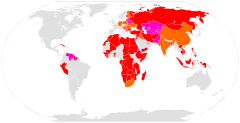Zastava M-70
| Zastava M-70 | |
|---|---|
|
A Zastava M-70AB2 | |
| Type | Assault rifle |
| Place of origin | Yugoslavia |
| Service history | |
| In service | 1970s–present |
| Used by | See Users |
| Wars |
Gulf War Yugoslav Wars Kosovo War Insurgency in the Republic of Macedonia War in Afghanistan Iraq War 2011 Libyan Civil War Syrian civil war |
| Production history | |
| Designed | 1959-1968 |
| Manufacturer | Zastava Arms |
| Produced | 1970 |
| Number built | 4,000,000[1] |
| Variants | See Variants |
| Specifications | |
| Weight | 3.70 kg (8.16 lb) |
| Length | 940 mm |
| Barrel length | 415 mm |
|
| |
| Cartridge | 7.62×39mm |
| Caliber | 7.62mm |
| Action | Gas-operated (rotating bolt) |
| Rate of fire | 620 rounds/min |
| Muzzle velocity | 720 m/s (2,362 ft/s) |
| Effective firing range | 410 m (448.4 yd) |
| Feed system | 30-round detachable box magazine, can accept 75 round drum magazines |
| Sights | Iron sights |
The Zastava M-70 is an assault rifle developed and produced in Yugoslavia, nowadays Kragujevac, Serbia by Zastava Arms company. The design of the M-70 was based on modified Soviet AK-47 and AKM assault rifles and it became the standard issue weapon in the Yugoslav People's Army in 1970.[2] The M-70 is an air-cooled, magazine-fed, selective fire rifle. This weapon is also available as a modern sporting rifle in the US without select fire capabilities.
History
Initial development of a domestic AK variant began c.a 1959,[3] and the first models submitted by Zastava for military field trials were with the early M-64 series of rifles[4] with milled receivers, threaded barrels, familiar Zastava handguards, gas cutoffs for grenade launching, and several other diversities from the mainstay AK design, such as a bolt hold open device on the right side of the receiver, and a charging handle that appeared different from other AK models.[5] Though performances were satisfactory, the Yugoslav military did not adopt the rifle as the standard infantry armament.[6]

In 1970, a second opportunity emerged, and Zastava was given the go ahead to begin with army funded mass production of the AP M-70 and M-70A series (Serbo-Croatian: Automatska Puška Model 1970, Automatic Rifle Model 1970) of which the M-70A was the folding stock version.[7]
Before the larger models of these rifles were made, cost-cutting measures in production resulted in the removal of the internal bolt hold open, and relocation to the magazine follower. In addition, the usual placement of the barrel through threading into the receiver was replaced by the cheaper method of pressing and pinning the barrel into the receiver.[8] Rifles produced with these new features were known as models AP M-70B (fixed stock version), and M-70AB (folding stock version).[9]
As with the M-70 series of automatic rifles, these models failed to be produced in larger quantities before further cost-efficiency production measures gave way to yet another model.
This time the milled receiver was replaced by a receiver stamped from a smooth 0.9 mm (0.04 in) thick sheet of steel, a firing rate reducer was added to the trigger group, and the muzzle brake replaced the muzzle nut that originally came on the two prior models. Yugoslavian AKs produced with these features were named models AP M-70B1 (fixed stock) and M-70AB1 (folding stock).[10]
These models eventually failed to mass-produce as well, before final alterations to the M-70 rifle design resulted with the AP M-70B2 (fixed stock) and M-70AB2 (folding stock) models. These last two models featured a thicker 1.5 mm (0.06 in) stamped receiver and bulged front trunnion, which was intended to strengthen the rifle in order to make it more suitable for frequent grenade launching.[11] These two models would become the most widely produced of the M-70 series, and in turn the most widely used model used by the YPA, as well as the various armed groups fighting in the Yugoslav wars of the 1990s. Parts kits imported into the U.S. however, show markings that appear to contradict the final fixed stock model name. On these kits the bulged, thicker stamped receiver model is actually the M-70B1 model.
All of the M-70 models share the grenade launching ability with gas cutoff, the lengthened wooden handguard with 3 cooling slots, iron sights with flip-up illuminating elements, initially filled with phosphorus and later with tritium (Which is used on the current production M-70's), to improve aiming at night; the plunger that keeps the receiver cover in place during grenade launching, and a non-chrome lined barrel. Fire selectors have R markings for automatic fire (The R stands for "rafalna", "burst fire") and J for semi-automatic fire (The J stands for "jedinačna", "single").
Design and features
The M-70 can easily be told apart from other AK rifles by the three cooling slots on the foregrip, the light-coloured teak furniture and the black rubber buttplate on fixed-stock M-70s. The M-70s also have a grenade-launching sight and gas cut-off on the gas block, and are capable of launching rifle-grenades. To launch them a 22mm diameter grenade launching adapter is screwed on in place of the slant brake or other muzzle device.[12]
The receiver of the M-70 is 1.5 mm thick, compared to the 1 mm thick receiver of the AKM, making it more rigid. Likewise, the barrel is not chrome-lined, making it more accurate than a standard AKM, but at the cost of increased susceptibility to corrosion. The lack of chrome lining is consistent with other Zastava built rifles of Soviet design (such as the Yugoslavian M-59 or M-59/66).
Variants

- M-70 – milled receiver, fixed stock
- M-70A – milled receiver, underfolding stock
- M-70A1 – milled receiver, underfolding stock, mount for night or optical sights
- M-70B1 – stamped receiver, fixed stock
- M-70AB2 – stamped receiver, underfolding stock
- M-70B1N – stamped receiver, fixed stock, mount for night or optical sights
- M-70AB2N – stamped receiver, underfolding stock, mount for night or optical sights
- M-70AB3 – stamped receiver, underfolding stock, rifle grenade sight removed and replaced with a BGP 40 mm under-slung grenade launcher
M-70B3 – stamped receiver, fixed stock, rifle grenade sight removed and replaced with a BGP 40 mm under-slung grenade launcher
- M-92 – carbine, the shorter variant of the M-70AB2
- PAP M-70 – semi-automatic variant intended for the civilian market
Users
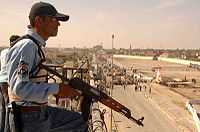
 Afghanistan - Imported in 2004-2005 from Croatian or Slovenian stocks.
Afghanistan - Imported in 2004-2005 from Croatian or Slovenian stocks.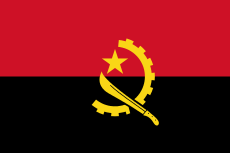 Angola
Angola Bosnia and Herzegovina
Bosnia and Herzegovina Croatia - (Being phased out and replaced by Croatian made VHS assault rifle)
Croatia - (Being phased out and replaced by Croatian made VHS assault rifle) Cyprus - Uses the Zastava M-77
Cyprus - Uses the Zastava M-77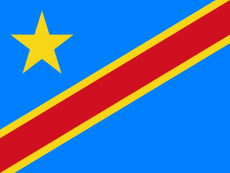 Democratic Republic of the Congo
Democratic Republic of the Congo Iraq
Iraq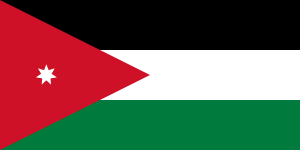 Jordan[13]
Jordan[13]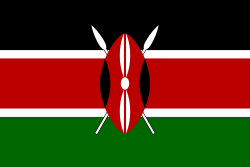 Kenya - The weapon was seen being used by Kenyan police responding to the 2013 Westgate shopping mall shooting[14]
Kenya - The weapon was seen being used by Kenyan police responding to the 2013 Westgate shopping mall shooting[14] Kosovo[15]
Kosovo[15]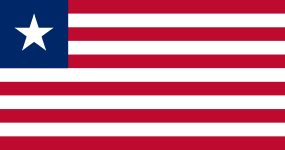 Liberia
Liberia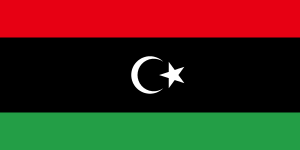 Libya
Libya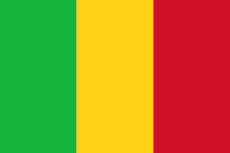 Mali
Mali Montenegro
Montenegro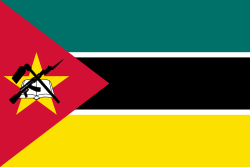 Mozambique
Mozambique Nicaragua
Nicaragua-
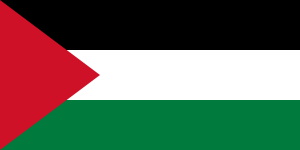 Palestinian Authority[16]
Palestinian Authority[16] 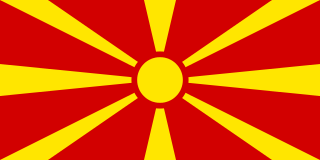 Republic of Macedonia
Republic of Macedonia Rwanda[17]
Rwanda[17] Serbia[18]
Serbia[18] Slovenia (Replaced by FN F2000), used for practice and in storage
Slovenia (Replaced by FN F2000), used for practice and in storage Somalia
Somalia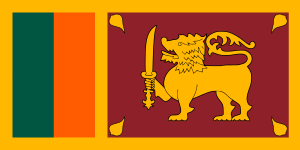 Sri Lanka - Used during the Sri Lankan civil war, a small number of the LTTE rebels operating.
Sri Lanka - Used during the Sri Lankan civil war, a small number of the LTTE rebels operating. Syria - Used by both government and opposition forces.
Syria - Used by both government and opposition forces.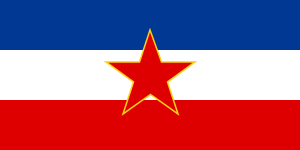 Yugoslavia Passed on to successor states.
Yugoslavia Passed on to successor states.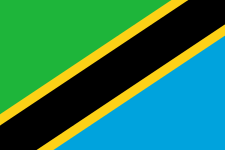 Tanzania
Tanzania
See also
References
- ↑ "Weapon". Retrieved 16 November 2014.
- ↑ "History of Zastava Arms". Retrieved 16 November 2014.
- ↑ "Ovdje se inače radi o oružju koje je ispitivano i postepeno usavršavano od 1959. do 1970. godine kada je konačno usvojeno." 'Oruzje Bosanskog Otpora' (Weapons of Bosnian Defense), Fadil Nurkić, p.71, 2005 (This is normally a weapon that has been tested and gradually refined since 1959, until 1970 when it was finally adopted.)
- ↑ Nakon više takvih kombinacija, pod oznakom M-64A i M-64B oružje je predato armiji na uvid." Nurkić, p.71 (After more such combinations, the weapon was handed for inspection to the army under designations M-64A and M-64B)
- ↑ "Zadržana je i odvojiva ručica za repetiranje" Nurkić, p.71 (A detachable cocking lever was also kept.)
- ↑ "Iako zadovoljni, nadležni vojni organi ipak nisu prihvatili ovo oružje, pa je PAP M-59 i dalje ostala standardno oružje." Nurkić, p.71 (Even though they were content, military authorities did not accept this weapon, and PAP M-59 thus remained the service rifle.)
- ↑ "Usvojena su dva osnovna modela, i to kao M-70 za automatsku pušku sa drvenim kundakom i M-70A za verziju sa preklopnim kundakom (A-od automat)." Nurkić, p.72 (Two standard models were adopted: M-70 as an automatic rifle with a wood stock and M-70A as the version with a folding stock (A-from automatic).)
- ↑ "Istovremeno navojna veza cijevi sa sandukom zamijenjena cilindricnim presovanim blokom, dodatno osiguranim čivijom," Nurkić, p.72, (At the same time the threading of the barrell into the receiver was replaced with the cylindric pressured block, additionally fastened with a nail.)
- ↑ "Sve to rezultiralo je i dodatnim oznakama oružja, tako da se modeli sa drvenim kundakom označavaju sa M70B, a sa preklopnim kundakom M-70AB." Nurkić, p72. (This all resulted in additional weapon designations, so the wood stock models are marked as M-70B and the folding stock ones are marked as M-70AB.)
- ↑ "Osnovu daljih modifikacija predstavlja uvođenje presovanog umjesto prijašnjeg sanduka rađenog glodanjem iz punog čeličnog komada, ali su uvedene i druge izmjene, kao i oznake na oružju. Novi modeli oznaceni su M-70B1 i M-70AB1" Nurkic, p.72 (The basis for following modifications was the introduction of a pressured receiver instead of the previous receiver made by shaping a steel block, but there were other modifications, such as weapon designations. New models were marked as M-70B1 and M-70AB1.)
- ↑ "Međutim, kako su kod ovih modela sa sandukom od lima debljine svega 0,9 mm primjećeni određeni nedostaci, uvedeni su novi modeli M-70AB2 i M-70B2 sa limenim sandukom debljine 1,5 mm, i upravo su oni najmasovnije koristeni u jugovojsci." Nurkić, p.72 (However, since these models with a receiver made out of a 0.9 milimeter-thick metal sheet had some shortcomings, new models M-70AB2 and M-70B2 were introduced, featuring a 1.5 mm metal sheet receiver, and they were the most widely used M-70 models in the JNA.)
- ↑ http://home.roadrunner.com/~m70AK3/M70.htm |M70AB2 & M70B1 Yugoslavian Battle Rifles
- ↑ http://www.sipri.org/research/armaments/transfers/transparency/national_reports/serbia/SER_08.pdf/view
- ↑ "Gunmen attack mall in Kenya". NBS News.com. Retrieved 2013-09-23.
- ↑ "Kosovo 'imams held' in raids on Islamic State recruitment". BBC News. 17 September 2014. Retrieved 17 September 2014.
- ↑ "ַURLȡ". Retrieved 16 November 2014.
- ↑ "Rwanda Rwandan Army ranks land ground forces combat uniforms military equipment rwandais grades unif-Army Recognition-Army Recognition". Retrieved 16 November 2014.
- ↑ Jones, Richard D. Jane's Infantry Weapons 2009/2010. Jane's Information Group; 35 edition (January 27, 2009). ISBN 978-0-7106-2869-5.
External links
| Wikimedia Commons has media related to Zastava M70B. |
| |||||||||||||||||||||||||||||||||||||||||||||||||||||||||||||||||||||||||||||
| ||||||||||||||||||||||||||||||||||||||||||||||||||||||||||||

